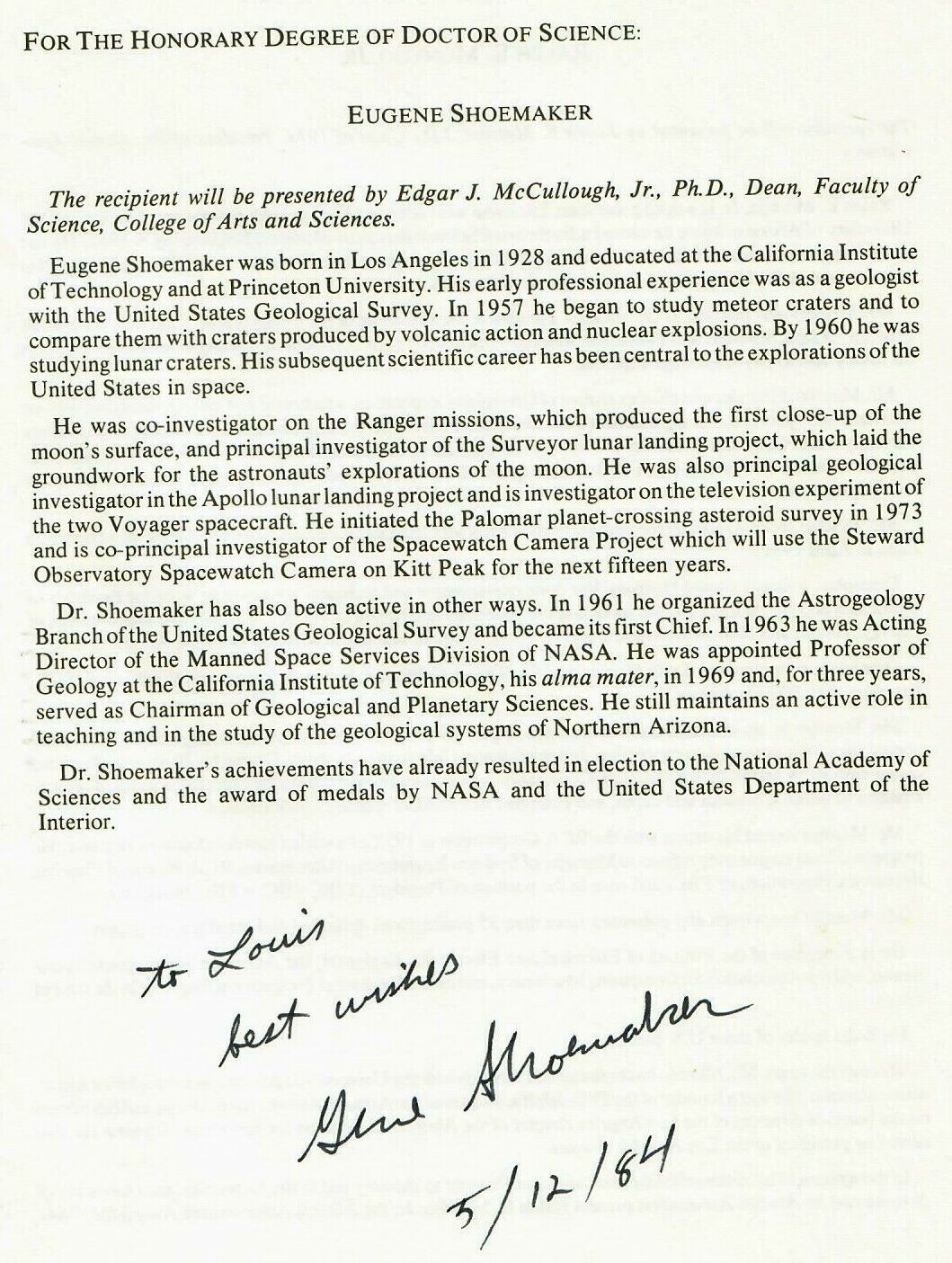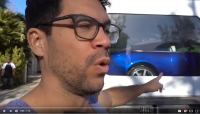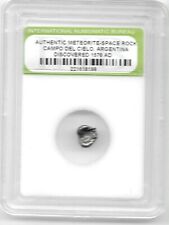 On eBay Now...
On eBay Now...RARE "Comet Shoemaker–Levy 9" Eugene Shoemaker Signed Bio For Sale

When you click on links to various merchants on this site and make a purchase, this can result in this site earning a commission. Affiliate programs and affiliations include, but are not limited to, the eBay Partner Network.
RARE "Comet Shoemaker–Levy 9" Eugene Shoemaker Signed Bio:
$399.99
Up for sale a RARE! "Comet Shoemaker–Levy 9" Eugene Shoemaker Signed Biography For Honorary Doctor of Science Degree.
ES-4951
Eugene Merle (Gene) Shoemaker (April 28, 1928 – July 18, 1997) was an American geologist and one of the founders of the field of planetary science. He co-discovered Comet Shoemaker–Levy 9 with his wife Carolyn S. Shoemaker and David H. Levy. This comet hit Jupiter in July 1994: the impact was televised around the world. Shoemaker also studied terrestrial craters, such as Barringer Meteor Crater in Arizona, and along with Edward Chao provided the first conclusive evidence of its origin as an impact crater. He was also the first director of the United States Geological Survey's Astrogeology Research Program. He was killed in a car accident while visiting an impact crater site in Australia. After his death, some of his ashes were carried to the Moon with the Lunar Prospector mission. Shoemaker was born in Los Angeles, California, the son of Muriel May (née Scott), a teacher; and George Estel Shoemaker, who worked in farming, business, teaching, and motion pictures. His parents were natives of Nebraska. During Gene's childhood they moved between Los Angeles, New York City, Buffalo, New York and Wyoming, as George worked on a variety of jobs. George hated living in big cities, and was quite satisfied to take a job as director of education for a Civilian Conservation Corps (CCC) camp in Wyoming. His wife soon found life in a remote cabin quite unsatisfactory. They compromised, when Muriel got a teaching job in Buffalo. She could teach in the Buffalo School of Practice of the State Teachers College at Buffalo during the school year while keeping Gene with her, then both would return to Wyoming during the summers. Gene's passion for studying rocks was ignited by the science education courses offered by the Buffalo Museum of Education. He enrolled in the School of Practice in the fourth grade, and began collecting samples of minerals. Within a year, he was also taking high-school-level evening courses. The family moved back to Los Angeles in 1942, where Gene enrolled in Fairfax High School at the age of thirteen. He completed high school in three years. During that time he also played violin in the school orchestra, excelled in gymnastics, and got a summer job as an apprentice lapidary. Shoemaker enrolled in the Caltech in 1944, at the age of sixteen.[b] His classmates were older, more mature and on a fast track to graduate before serving in World War II. Shoemaker thrived in the fast pace and earned his bachelor's degree in 1948, at age nineteen. He immediately undertook the study of Precambrian metamorphic rocks in northern New Mexico, earning his M. Sc. degree from Caltech in 1949. The United States Geological Survey (USGS) hired Shoemaker in 1950, and he maintained an association with the organisation for the rest of his career. His first assignment was to search for uranium deposits in Utah and Colorado. His next mission was to study volcanic processes, since other investigators had already noticed that uranium deposits were often located in the vents of ancient volcanoes. This study led him to explore the Hopi Buttes of Northern Arizona, which happened to be near Meteor Crater. Daniel Barringer, an entrepreneur and mining engineer who had discovered Meteor Crater in 1891, had postulated that it had been caused by the impact of a meteor. About the same time, G. K. Gilbert, the chief geologist of the USGS, examined the crater and announced that it had been created by an explosive venting of volcanic steam. A majority of scientists accepted Gilbert's explanation of the cause of the crater, and it remained the conventional wisdom until Shoemaker's investigations half a century later. In 1993, he co-discovered Comet Shoemaker–Levy 9 using the 18-inch Schmidt camera at Palomar Observatory. This comet was unique in that it provided the first opportunity to observe the planetary impact of a comet. Shoemaker–Levy 9 collided with Jupiter in July 1994. The resulting impact caused a massive "scar" on the face of Jupiter.
Related Items:✰ Rare Iron Meteorite Stone Tektite Fragment Astroid Meteor Space Comet Rock COA
$14.99
RARE "Comet Shoemaker–Levy 9" Eugene Shoemaker Signed Bio
$279.99
Vintage RARE Comet Trail Pack Canvas Backpack Nelson Sales Co Style BG-184 USA
$199.99








